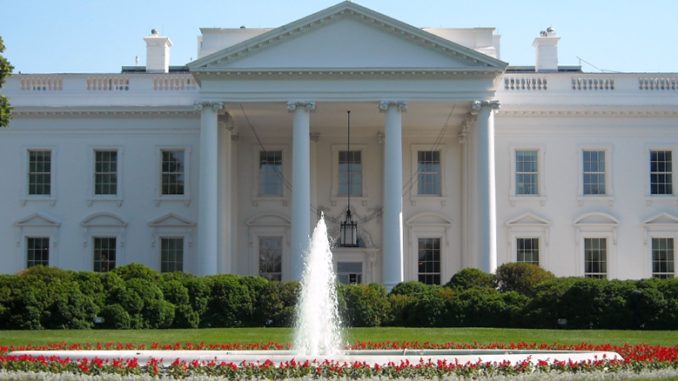
On June 21, President Trump released his proposal for a significant reorganization of the executive branch. Claiming that inefficiency in the executive branch has brought about a loss of faith in government, that ending stove piping of agencies will drive change, and that his proposed changes will enhance efficiency in the executive branch, Trump has proposed a series of alterations to the executive bureaucracy. These proposals include merging the Departments of Labor and Education into a single Department of Education and the Workforce, shifting many human resources functions out of the Office of Personnel Management to the Executive Office of the President, relocating the Food Stamp program from the Department of Agriculture to the renamed Department of Health and Public Welfare, and a number of other, smaller, shifts and consolidations of responsibilities.
Reactions have been mixed to the proposal. According to OMB Directory Mick Mulvaney, “this effort, along with the recent executive orders on federal unions, are the biggest pieces so far of our plan to drain the swamp. The federal government is bloated, opaque, bureaucratic and inefficient.” While House Minority Leader Nancy Pelosi described the plan as “a recipe for more bureaucratic, inefficient and unresponsive government – and sadly, that’s exactly Republicans’ purpose.” Robert Shea, who served in OMB under President George W. Bush was concerned that the “massive expense” could deter politicians from enacting the changes, while President Bush’s former acting director of OPM, Dan Blair,argued that civil service reform was a more pressing need than reorganization. There were also opposition from several individuals, such as Joseph Califano Jr, Secretary of Health Education and Welfare under President Carter, to restoring the word “welfare” to the department name, arguing it was intended to make future cuts easier by applying a term seen as pejorative. Finally, Tony Reardon, national president of the National Treasury Employees Union called the transfer of human resources functions out of the OPM a “power grab”.
The most significant group of changes relate to the Office of Personnel Management. The OPM has already seen a reduction in its scope prior to these reforms, with the Department of Defense taking over some of its background checks. The new reform would complete that transition by moving all remaining background checks still performed by the OPM. Many of the remaining OPM functions involving the civil service would be moved to the Executive Office of the President. This would represent a significant change in the way the civil service is administered, giving the president more direct control over non-appointed government employees, which, given President Trump’s contentious relationship with the Department of Justice, and earlier with the State Department, is unlikely to sit well with either the employee unions or career bureaucrats.
The food stamp change seems to have generated considerable opposition among those who support the food stamp program. Many comments have suggested the move to the renamed Department of Health and Public Welfare is being made in preparation of significant cuts, that eliminating clear ties to agricultural concerns, and applying the public welfare label, are intended to make it easier to reduce spending without facing opposition from the farm lobby. For example, Joseph Califano argued , “in putting food stamps with Congress’s agriculture committees, we thought they understood the benefits to farm states of the program—financially, to their families and farms—and would be more supportive of it than it would be if the program were viewed as just for poor people.”
One change which has received little attention is the proposal to privatize the US Postal Service. While specific details are deferred until the August 2018 report of the President’s Task Force on the Postal System is released, this too could prove an unpopular change, at least among federal employees.
The smaller changes, the mergers and transitions, are somewhat of a mixed bag. Some seem self evident, such as merging HHS’s food inspection services with the USDA’s, while others are superficially beneficial but may entail hidden expenses, such as moving the Army Corp’s of Engineer’s civilian division to the Department of Interior or Department of transportation, which makes sense in terms of organization, but may entail added expense as the civilian divisions cannot benefit from the experience, equipment and logistical support of the military construction divisions. Then there are moved which seem somewhat puzzling, as the move of the USDA’s rural home loan program tot he Department of Housing and Urban Development, which seems to conflict with both organizational and practical principles, moving rural loans from a department which has rural matters as its primary focus to one which does not.
What seems to be most noteworthy in reading the proposal is how rarely it mentions savings. There is constant talk about streamlining and efficiency and realigning priorities, but very few mentions of reducing the costs of these services. That seems rather unusual for such a comprehensive plan. Normally such reforms are promoted at least in part on the savings they will provide, that this one does not suggests that even those promoting it recognize implementing it will entail considerable cost.
Many of these changes, especially the large changes such as restructuring OPM, will require congressional, which may be difficult to secure during the lead up to the 2018 midterm elections, especially given the negative reaction of the public employee union leadership. Should the Republicans retain their majorities after the midterms, there is a greater likelihood of the restructuring being enacted — though even then the costs may be a deterrent — but, were the Democrats to win either house, it seems unlikely any of the measures requiring congressional approval would be enacted.
